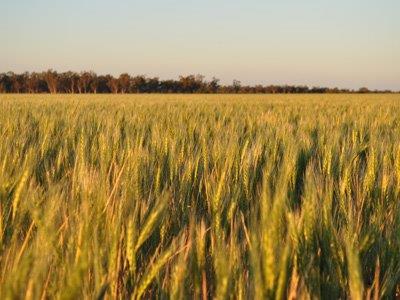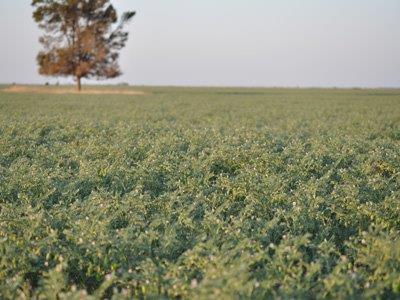Broadacre Cropping
With the region often referred to as 'The Golden Triangle' for its strong broadacre cropping reputation, the ABS commodity summary estimates that 941,619Ha, or 13%, of NSW broadacre crops are produced in the Moree Plains Shire Council region. Only an estimated 75,000Ha are irrigated, the majority of which is cotton, and total broad acre cropping in the shire accounts for $859,899,598, or 94%, of the value of agricultural production in the shire.
Within this broadacre cropping segment, approximately 588,385Ha are cereals for grain (11% NSW), 154,219Ha of Cotton (47% NSW) and 207,683Ha of pulses and oil seeds (20% of non-cereal crops in NSW). Within the dryland broadacre cropping segment crop rotations are practised across the majority of the area.
Cereals
Cereals are primarily a dryland crop, with the three primary cereal crops in the region being whe at (371,725Ha), barley (124,947Ha) and sorghum (80,705Ha). The shire accounts for approximately 10% of the wheat produced in NSW, 14% of the barley and 41% of the sorghum. The yield is dependent on the seasonal conditions, while the value received is dependent on commodity prices and quality.
at (371,725Ha), barley (124,947Ha) and sorghum (80,705Ha). The shire accounts for approximately 10% of the wheat produced in NSW, 14% of the barley and 41% of the sorghum. The yield is dependent on the seasonal conditions, while the value received is dependent on commodity prices and quality.
The Moree Plains Shire is traditionally a prime hard wheat region. Malting barley varieties are often a part of the barley mix, but production of malt grain can be difficult. The planting window for wheat and barley is from late April through to June, but may be stretched to July if there are no earlier planting rains.
Sorghum is often widely planted in the eastern section of the region, in the western parts of the valley hot summer temperature limits its suitability as an option. Planting is in September and February, with the prime focus on avoiding flowering during peak summer.
Pulses and Oil Seeds
 The single most important pulse crop in the Gwydir Valley is chickpeas (149,801Ha or 116,803ton) producing 38% of NSW’s chickpeas. They are planted as a winter rotation crop across most of the cropping area. An important component in any cropping rotation, their role as a break crop and as a legume cannot be overstated. Strong demand for chickpeas in markets such as India has increased the price for them, thus making chickpeas a profitable rotation crop.
The single most important pulse crop in the Gwydir Valley is chickpeas (149,801Ha or 116,803ton) producing 38% of NSW’s chickpeas. They are planted as a winter rotation crop across most of the cropping area. An important component in any cropping rotation, their role as a break crop and as a legume cannot be overstated. Strong demand for chickpeas in markets such as India has increased the price for them, thus making chickpeas a profitable rotation crop.
Other pulse crops which feature in the region are mung beans (9,000Ha as a summer option, 29% of NSW) and faba beans (12,685Ha as a winter option, 39% NSW).
From an oil seed perspective, there has been a growing interest in canola in recent years, although its suitability is still being determined. Additionally, there is an estimated 6,000Ha of sunflowers.
